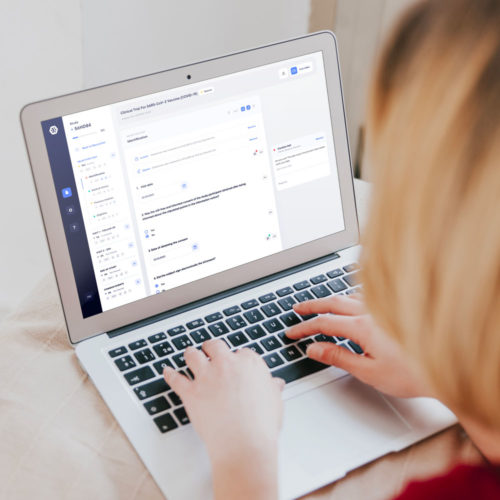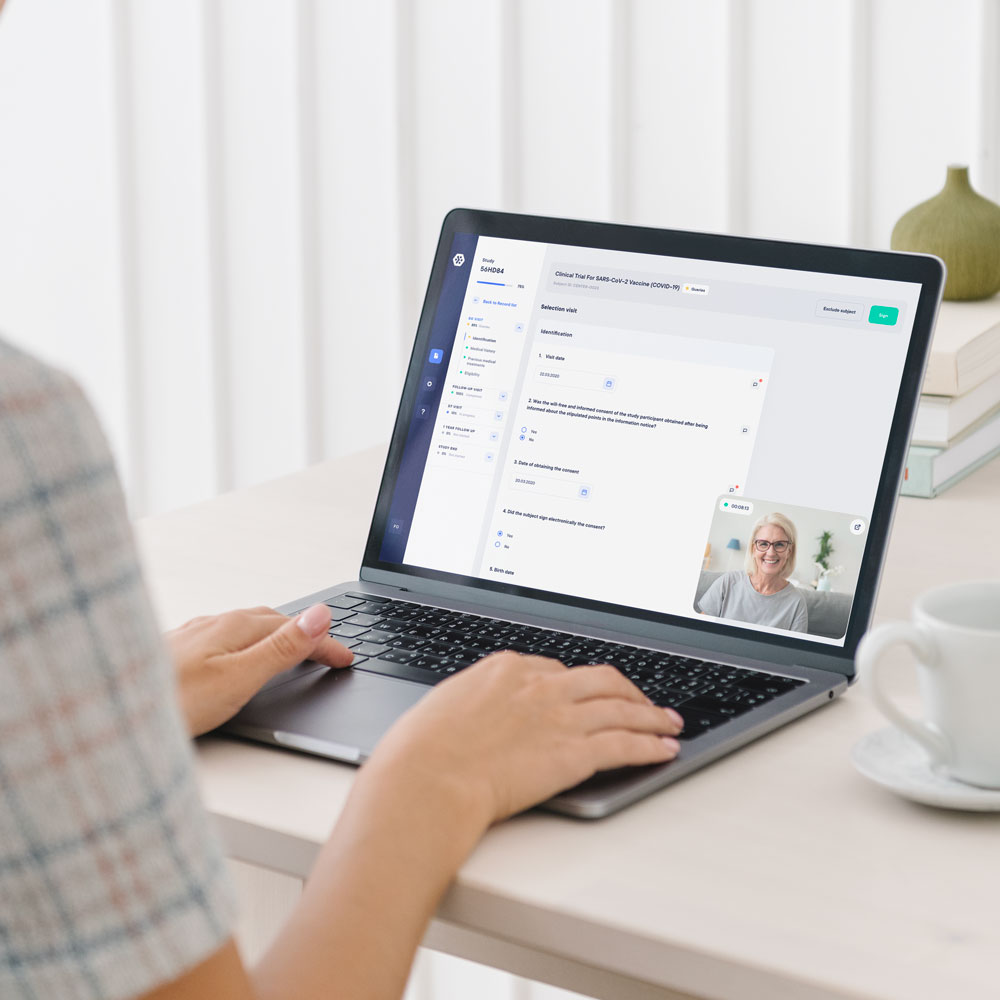What is an EDC solution?
EDC stands for Electronic Data Capture. Used in clinical trials, it is an alternative to traditional paper data collection. Indeed over the last decade, EDC has emerged, boosted by its great potential. EDC are used to collect clinical trial data in electronic forms. This means through digital consent forms (eConsent), electronic case report forms (eCRF), electronic patient report outcomes (ePRO), and so on.
A need for this particular technology was felt due to the cumbersomeness of paper-based clinical, as well as Excel based. Indeed paper and Excel are not any more efficient and secure enough to conduct clinical trials.
EDC solutions can be used for all types of clinical trials: pharmaceuticals, cosmetics, medical devices, raw materials…
5 reasons why you should switch processes for your clinical trials

01 – Data security and compliance
EDC solutions have been created to replace out-of-date paper and Excel-based clinical trials. Using those can cause a lack of security in your data collection because it cannot ensure that the data won’t be changed, seen by other people, or erased. Clinical trials must be secured so as to ensure data safety and patients’ personal data.
Here are the regulations, with which EDC solution must comply with:
-
21 CFR Part 11
-
ICH GCP
-
GDPR
-
HIPAA
-
HDS (Health Data Hosting)
-
ISO 27001
Compliance with these regulations and norms is a safety belt for centers, sponsors, and patients.

02 – Data quality
Using an EDC solution allows for better data quality. Indeed, as stated previously, using paper/excel sheets for your clinical trials cannot ensure that the data is cleared of errors, that anything is missing, you can’t check previous changes…
Switching to an EDC solution improves the data quality. Digital platforms are designed to raise alerts in case of missing/erroneous/surprising data. You can also keep track of all previous entries in an audit trail. Having ePROs enhance the data quality because it allows for real-life data, which is more relevant. EDC solution also includes several types of questions that you can add to your forms, making it more precise concerning the answer you’re waiting for. You can add calculus questions, radio buttons, ratings, text, dropdowns…
This solution also avoids making transcription mistakes, which can happen when writing data on paper and transcribing it on an excel sheet for example.

03 – Accessibility, from anywhere, at any time
One of the biggest problems with paper is the logistical organization. Centers need to have a significant budget to cover the expenses (buying printers, paper, ink) but also include the sending of documents and then the archives.
Also, being a physical medium paper can be transported, lost, damaged, or thorn… while digital data is less subject to loss and damage. Hosted in the Cloud, all data can be accessed from anywhere at any time. All entries are automatically saved and traced.
As additional security measures, platforms implemented access and permissions controls. It allows platform admins to set up special roles and permissions concerning data access so that only the relevant data is displayed to the relevant person.
You can access the platform from your computer or tablet from everywhere, at any time.

04 – Improved center efficiency
One of the main goals in switching processes from paper/excel to an EDC platform is to gain productivity and efficiency.
EDC solution allows for that because they give you an overview of all the progress in real-time. (Globally, per form, per patient). It is a useful tool as it indicates the percentage completed and the remaining tasks.
Clinicians can gain efficiency in collecting data. In fact, create your eCRF so that only the appropriate questions appear so they don’t have to control if the question is of the patient concern. For example, asking if pregnant won’t be relevant for male subjects. Also, you can raise queries both automatically and by hand. It flags the data, so someone will have to review it.
Regarding the sending of electronic informed consent, the center only has to gather patients’ email address and information, then choose between sending by email or text.

05 – Patient engagement
When engaging in a clinical trial, patients want to have the best experience possible. In the past, this patient experience wasn’t valued enough which led to patient attrition to clinical studies.
From now on, it is possible to create one real experience based on all the possibilities given by the digitalization of clinical trials. Patients can take part in trials even if they’re living far from the center, or have full-time jobs… thanks to teleconsultation (eConsult), eCRFs, ePROs, and eConsents.
They can access a secure personal interface, where they can consult their consent PDF and their surveys in complete security.
The purpose of Datacapt
We have designed Datacapt to be the most user-friendly, flexible, and secure EDC platform in the market.
In fact, you don’t need any specific skills thanks to a no-code solution.
Also, the learning curve is very quick, which means that in 3 hours you can operate on the platform by yourself, and start building forms to start your study in less than a week.
We have implemented 4 modules to help you focus only on what really matters, your study and collecting data.
Datacapt has been trusted by many companies over the years to conduct their clinical trials. Once they saw all that could be achieved with our EDC platform, they wouldn’t go back to paper and excel sheets.
Curious to see for yourself?
Contact us to get a demo, you won’t be disappointed!





